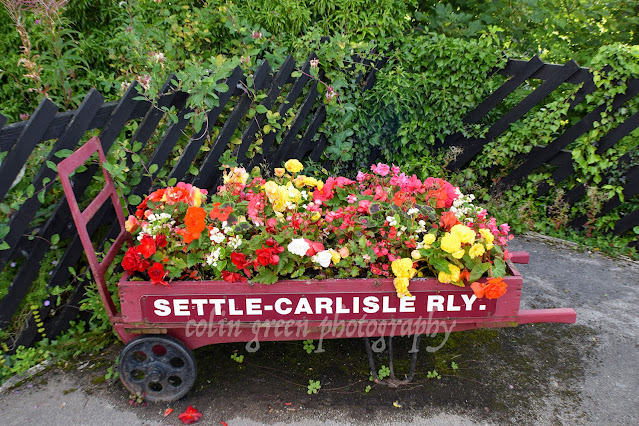The Ribblehead Viaduct is a set of pictures taken in April 2015 using a Polaroid IS2132 digital bridge camera. The impressive structure is somewhere I had wanted to visit for a while, and I was in nearby Kirkby Lonsdale when I got the chance. The viaduct is also known as Batty Moss, and it is located approximately 13 miles north of Settle and 73 miles south of Carlisle on the famous Settle to Carlisle Railway. There is the Ribblehead Railway Station adjacent to the viaduct, which is a train ride of approx. 1 hour and 20 minutes from Leeds Railway Station, and the B6255 road linking Hawes with Ingleton passes the viaduct.
The pictures below are a set I have recently re-edited for inclusion in my Photo4Me portfolio. Clicking any image will open a link to the listing in another window.
All the pictures can be purchased on Photo4Me or just enjoyed her and on my Clickasnap profile, They will shortly be offered in various products at my Colins Picture This Zazzle store.
The history of the viaduct below is taken from my earlier post on the Ribblehead Viaduct.
The viaduct was designed by engineer John Sydney Crossley. The first stone was laid on October 12, 1870, and the last in 1874. One thousand navvies built the viaduct and established shanty towns on the moors for themselves and their families. They named the towns after Crimean War victories, well-to-do districts of London, and biblical names. There were smallpox epidemics and deaths from industrial accidents. Around one hundred navvies were killed during its construction. There are around 200 burials of men, women, and children in the graveyard at Chapel-le-Dale dating from the time of its construction. The church has a memorial to the railway workers.
The line over the bridge was opened to goods traffic on August 3, 1875, but passenger trains did not commence running until May 1, 1876, following approval of the works by Colonel F. H. Rich, an inspecting officer of the Board of Trade.
In 1964, several brand new Humber cars landed on the ground after being blown off their waggons while being carried over the viaduct on a freight train.
Ribblehead Viaduct is 440 yards (400 m) long and 104 feet (32 m) above the valley floor at its highest point. It is made up of twenty-four arches of 45 feet (14 m) span, with foundations 25 feet (7.6 m) deep. Every sixth pier is 50% thicker to mitigate against complete collapse should any pier fail. The north end of the viaduct is 13 feet (4.0 m) higher in elevation than the south end, leading to a gradient of 1:100. 1.5 million bricks were used in the construction, and some of the limestone blocks weigh 8 tonnes each.
Ribblehead Viaduct is the longest on the Settle-Carlisle Railway. Ribblehead railway station is less than half a mile to the south, and to the north is the Blea Moor Tunnel, the longest tunnel on the line. It is near the foot of Whernside.
The Settle-Carlisle Line is one of three north-south main lines, along with the West Coast Main Line through Penrith and the East Coast Main Line via Newcastle. British Rail attempted to close the line in the 1980s, citing the fact that the viaduct was unsafe and would be expensive to repair. A partial solution was to single the line across the viaduct in 1985, preventing two trains from crossing simultaneously. A 30 mph speed limit is also in force. The closure proposals generated tremendous protests and were eventually retracted. The viaduct, along with the rest of the line, was repaired and maintained, and there are no longer any plans to close it.
Two taller viaducts on the route are Smardale Viaduct at 131 feet (40 m) high and near Crosby Garrett, and Arten Gill at 117 feet (36 m).
In 2016, the line and viaduct carried seven passenger trains from Leeds to Carlisle per day in each direction, plus periodic long-distance excursions, many hauled by steam locomotives. Regular diesel-hauled heavy freight trains also use the route to help reduce congestion on the West Coast Main Line. Colas Rail operates a timber train most Friday afternoons, which passes over the Viaduct when it departs its yard opposite Ribblehead railway station. The combination of the rarely seen timber train and the British Rail Class 56 locomotives used to pull the train has built quite an enthusiastic following. Another regular traffic flow to use it is the limestone aggregate train from Arcow quarry sidings (near Horton-in-Ribblesdale), which runs to various stone terminals in the Leeds and Manchester areas on different days. This has to be reversed in the goods loop at Blea Moor signal box (north of the viaduct) because the connection from the quarry sidings to the main line faces north.
Thanks for looking, please take a moment to share and follow me on social media.
All the pictures remain the copyright of Colin Green.

























































